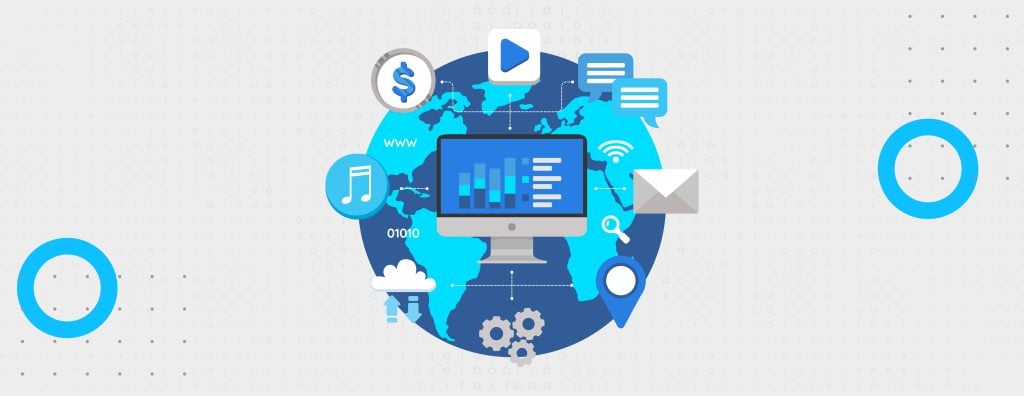Table of Contents
At admiral.digital, we advise clients across all stages of their digital customer journey and help organisations connect first points of brand contact to the lifetime value of a customer. Marketing automation is a key component of this strategy.
Although often forgotten, it drives leads and sign ups towards a first transaction or conversion while retaining customers over time. Consider it an automated engine running in the back that is constantly being triggered by individual user behaviour of acquired users.
Ecommerce brands that invested in sizable customer databases or lead databases get up to 20% of their monthly transaction from automated channels. Conversion rates often exceed 10%.
When executing marketing automation campaigns, we follow a 7-step process that helps us be successful across industries, channels and brands.
Step #1: Define user journeys and map them out
User journeys are the series of steps a prospect takes to become a customer. Understanding user journeys is critical to designing effective marketing automation campaigns.
Working in close collaboration with the client’s team, we map out user journeys across different stages of the digital customer experience by following the process below:
- Define the target audience
- Conduct customer research to identify key touchpoints and pain points
- Map out the steps a prospect takes from initial contact to becoming a customer
- Identify opportunities for automation at each stage of the user journey
Step #2: Create a content grid against these user journeys
After confirming the user journeys, we’ll apply them to a content grid in a spreadsheet format. For digital marketing, a content grid is a matrix that outlines the types of content you’ll use in your campaign, the channels you’ll use to distribute that content, and the user journeys each piece of content will support.
On the spreadsheet, we identify triggers, key messages, headlines, and content of every individual email that the client wants to include.
It’s a necessary step to develop this content grid because it helps us ensure that the client’s marketing automation campaigns are well-rounded and effective. Aligning your content with your user journeys can maximise the impact of your marketing automation campaigns.
Step #3: Create wireframe-based templates
A wireframe is a basic visual representation of a webpage or email template that outlines the layout and content placement without getting bogged down in details like colour or imagery.
We create wireframe-based templates to be used across all of the client’s automated emails that takes the following points into consideration:
- The user experience when reading the email
- The wireframes are flexible and easy to modify when required
- The design of the templates can be easily customised and scaled to accommodate different user journeys and types of content
If we feel that it’s necessary, we may get feedback on the wireframes from the client’s team before proceeding to the design stage.
Step #4: Design individual emails
Emails are a critical component of any marketing automation campaign, so they must be visually appealing and easy to read, as well as effective at driving engagement and conversions.
For designing effective emails, we follow these simple rules:
- Keep subject lines short and attention-grabbing
- Use clear and concise language in the body copy
- Include a clear and prominent call-to-action
- Use imagery that supports and reinforces the brand message
When all individual emails across all defined campaigns have been designed, we share them with the client’s team for review. After the designs are approved for every individual email, we move on to setup.
Step #5: Set up for email delivery
The process described below is how we set up all of the client’s individual emails before they get sent out to their intended target audience:
- Choose an email service provider (ESP) that meets the client’s needs and budget
- Ensure that a clear naming convention is used to make easy distinctions between marketing campaigns
- Set up triggers based on key user actions and events
- Use tracking to monitor the performance of the emails and identify opportunities for improvement
An email service provider (ESP) is the platform that you use to send your marketing automation emails and it is critical to ensure that your ESP is configured correctly and integrated with your website or other systems.
Triggers are events or actions that initiate an automated email, such as a user signing up for a newsletter or abandoning a cart.
Step #6: Test thoroughly
We’ll test different campaigns across the user journey because testing allows us to identify and correct any issues or errors in the campaign before it goes live, ensuring that it is effective and well-received by the target audience.
The key elements of our thorough testing process include:
- Testing individual emails to ensure that they render correctly across different email clients and devices
- Testing the triggers and workflows to ensure that they’re functioning correctly and initiating emails at the appropriate times
- Testing the tracking and analytics to ensure that we’re collecting accurate and useful data for the client
With the data gathered from tracking and analytics, we can evaluate open rates and CTR to initiate the final step for optimisation. All campaign results will be put into a basic CRM reporting template and passed to the client’s team.
Step #7: Optimise continuously
Through analytics, we can infer as to how well a campaign is performing via the following metrics:
- Clickthrough rate (CTR)
- Conversion rate
- Bounce rate
- Open rates
- Unsubscribe rates
If applicable, we continuously optimise the client’s automated email campaign over time to ensure that it remains effective and meets their goals based on data and feedback.
With the right tools, strategy, and approach, marketing automation can help you achieve your marketing goals while saving time and resources. Contact us at hello@admiral.digital and we can create a successful and sustainable marketing automation process that delivers results for your company.
